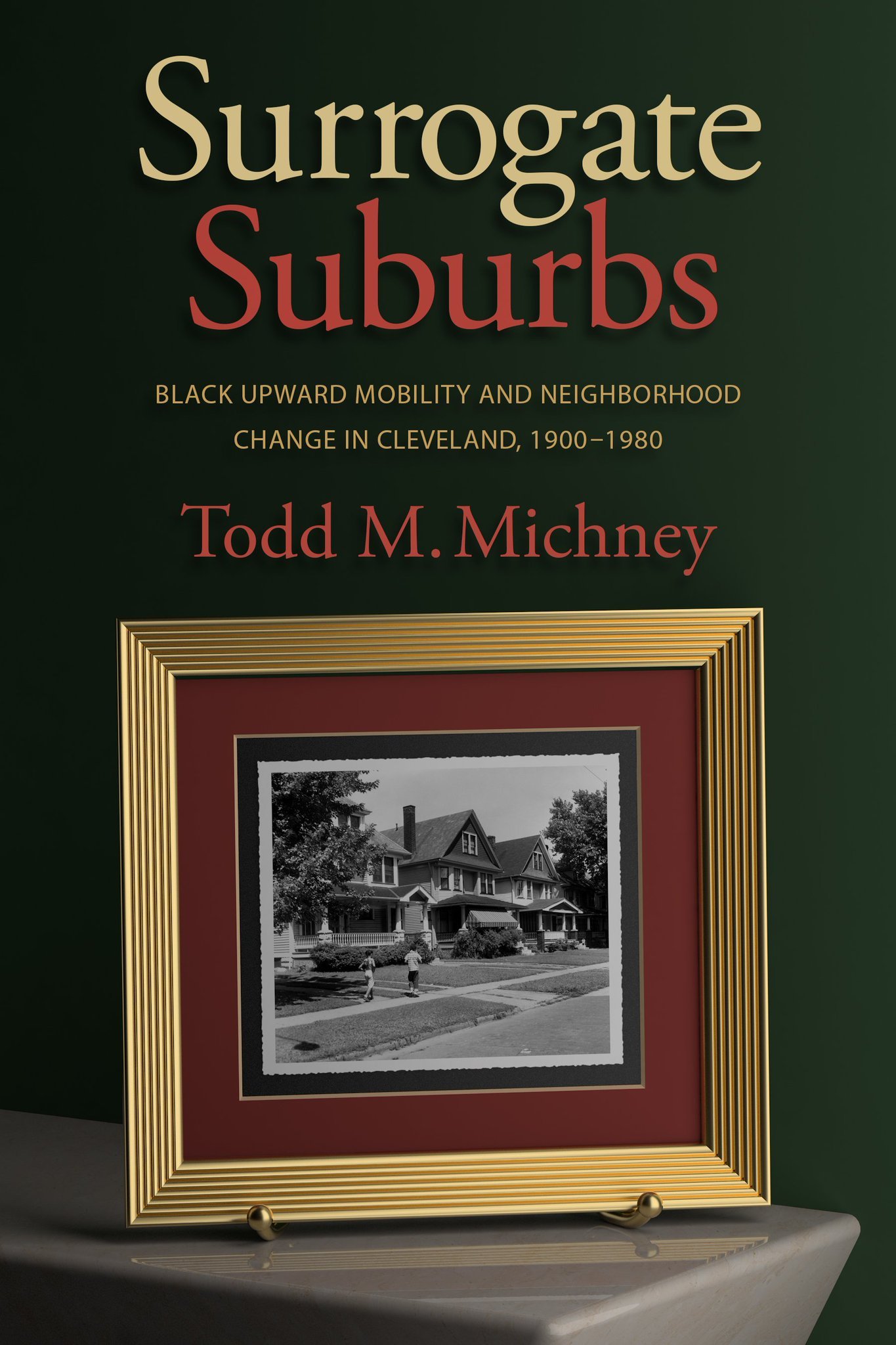Surrogate Suburbs: Black Upward Mobility and Neighborhood Change in Cleveland, 1900-1980
By Todd M. Michney
In early July 1953, Wendell and Genevieve Stewart purchased a two-story colonial on Talford Avenue in the Lee-Harvard neighborhood of Cleveland. Whether or not they knew they were crossing an invisible line (popularly known in the neighborhood as “38th parallel,” a reference connected to the Korean War), they set off a firestorm that would last through the end of year. While they received police protection in the first months of living on the street, five weeks after police protection ended, vandals threw a brick through their front window and defaced the house’s new paint job.
The conflict drew in Cleveland Mayor Thomas A. Burke, who personally intervened to try to find a compromise between white residents living in the neighborhood and the Stewarts, who were supported by local organizers and civil rights activists. As a result of tense negotiations between the Lee-Land Heights Civic Council, who opposed the Stewarts moving into their neighborhood, and the Stewarts, the couple received police protection for their home while Mayor Burke repeatedly tried to validate white residents’ concerns about declining home values if the Stewarts were allowed to stay. At a gathering of outraged white residents, Burke said what he was hearing from whites in the crowd was “economics, not bigotry” and recommended residents not engage in panic selling of their homes. While the purchasing of homes by African American families panicked some white residents, it also sparked the formation of the Ludlow Community Association in 1957, which succeeded in keeping the area racially integrated into the 1990s.
Such is the kind of granular information that Todd Michney provides in his book, Surrogate Suburbs. While many people may know about the general ways federal housing policies and local zoning restrictions impacted racial segregation in the region, it’s highly likely that many more do not know about neighborhood organizing and activism, as well as important events and developments, which shaped our area.
For instance, his book examines racial enrollment in day camp programs (such as the Jewish Community Center in Glenville) and high school enrollment numbers (Glenville High School’s student body had 60% Jewish students in 1944 and 6% in 1954). He shares stories of a senior vice president of Cleveland Trust who confided off the record in 1956 that for “public relations reasons” the bank policy did not permit financing the first black purchaser in a white neighborhood, frustrating black middle class buyers looking to move into new homes built for them and highlighting the severe housing shortage Black families experienced.
His work stretches into the latter half of the 20th century. In the 1960s and 1970s, Black residents living in neighborhoods like Glenville, Mount Pleasant, and Lee-Harvard chose to stay put, despite conditions they felt were threatening the overall quality of life there. Evidence shows that upwardly mobile African Americans had fewer means to exclude working-class Blacks or to flee, even if they wanted to do so. For those Black families who did choose to leave the city, they tended either to go northeast – to East Cleveland, Cleveland Heights, Euclid, South Euclid, and Richmond Heights – or southeast to Shaker Heights, Garfield Heights, Warrensville Heights and Bedford Heights.
Michney’s book helps to explain so much of the settlement patterns in Northeast Ohio – and if you read the book, you’ll likely walk away with an appreciation for the complexities our communities have experienced.
